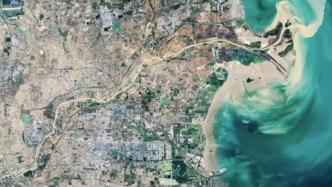
On February 22, a team of Chinese and American scientists published a study in "Science Advances". Through the analysis of the flood of the Yellow River in China, it shows that the method of building dams along the river to prevent floods may be counterproductive.

The U.S.-China team analyzed the frequency of flooding in the Yellow River and found that flooding became more common about 4,000 years ago as local human settlements expanded.
More extreme and frequent rainfall due to global warming means flooding is a growing threat to millions of people around the world. While there is plenty of research on how climate change affects flood risk, the role of human activity in this is less clear.
To explore this, the US-China team analyzed the frequency of flooding in the Yellow River. This waterway is the cradle of Chinese civilization.
Using historical records and data from river sediments, the researchers compiled a timeline of Yellow River floods over the past 12,000 years. They found that between 12,000 and 7,000 years ago, floods occurred infrequently, averaging just four every 100 years.
They then compared the flood timeline with records of human activities, such as agriculture, and found that about 4,000 years ago, floods became more common as local human settlements expanded.
Yu Shiyong, a professor at Jiangsu Normal University and one of the authors of the paper, said the analysis showed that when people started building mud ridges along rivers as flood barriers about 1,500 years ago, the frequency of floods increased dramatically.
Yellow River floods have occurred 10 times more frequently over the past 1,000 years than before ancient Chinese civilization began, researchers have found. Yu Shiyong said their analysis showed that human activities, mainly the use of artificial dikes, caused about 80 percent of the increase in flood rates, while the rest could be attributed to natural changes in climate.
Computational models of the river show that muddy embankments along the river could lead to greater accumulation of sediment on the river bottom. This raises the river bed and water level, making flooding more likely.
James Best of the University of Illinois at Urbana-Champaign said: "This work highlights the need to study human activities that affect flooding in the context of climate change. This is an important message we must keep in mind today."
Today, artificial dikes are no longer used to contain the flooding of the Yellow River. Since the early 1980s, the Chinese government has introduced policies to protect wild vegetation along the river, which has stabilized the soil around the river. That helps keep the soil from falling into the water and may be a better way, Yu said.
Yu Shiyong said that the successful experience of flood control and water control through soil and water conservation has put forward a holistic approach for sustainable river governance. However, building dikes is still the preferred flood protection strategy in many parts of the world, and Yu believes other countries should also abandon artificial dikes. One can learn lessons from studying the history of the river.
Related paper information:
https://doi.org/10.1126/sciadv.adf8576
(Originally titled "Building dikes to defend against Yellow River floods may be counterproductive")